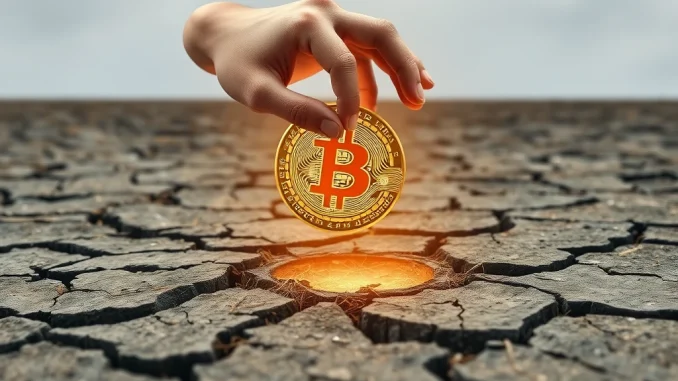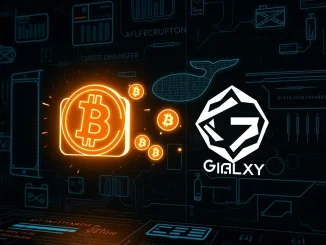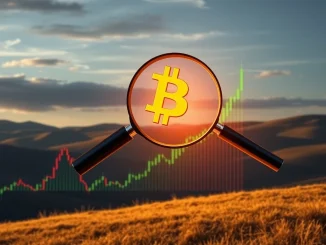
The saga of the defunct cryptocurrency exchange Mt. Gox continues, and while many former users await the return of their long-lost Bitcoin, some financial players are seeing a unique opportunity. Strive Enterprises, a U.S.-based financial services firm, is reportedly looking to acquire distressed Bitcoin claims linked to the infamous exchange. This move highlights a fascinating corner of the cryptocurrency investing world, where value is sought not just in spot prices, but in the tangled aftermath of past events.
What Exactly Are These Mt. Gox Bitcoin Claims?
To understand Strive’s interest, we first need to revisit the story of Mt. Gox. Once the world’s largest Bitcoin exchange, it collapsed in 2014 after a massive hack resulted in the loss of hundreds of thousands of Bitcoin. Since then, a lengthy and complex rehabilitation process has been underway to return a portion of the remaining assets to creditors.
These creditors hold ‘claims’ against the bankrupt exchange, representing the amount of cryptocurrency (primarily Bitcoin) they were owed. However, accessing these funds has been anything but straightforward:
- The process has dragged on for years, marked by delays and legal complexities.
- The exact timeline and method of repayment have shifted over time.
- Claimants often need to navigate complicated administrative procedures.
Because of these difficulties and the long wait, many claimants might prefer immediate liquidity rather than waiting indefinitely for the full amount. This is where the concept of ‘distressed assets’ comes in.
Why Are These Considered Distressed Crypto Assets?
Distressed crypto assets, in this context, refer to the Mt. Gox claims. They are ‘distressed’ because the underlying value (Bitcoin) is locked up, difficult to access, and the process for recovery is uncertain and protracted. This makes the claims less valuable to some holders than readily available Bitcoin.
Financial firms like Strive see this distress as an opportunity. By offering to buy these claims directly from creditors at a discount to the current market value of the Bitcoin they represent, they provide claimants with immediate cash. In return, Strive takes on the risk and patience required to see the rehabilitation process through and eventually receive the Bitcoin.
Strive Enterprises’ Reported Strategy
According to reports, including one by CoinDesk citing an SEC filing, Strive Enterprises is specifically targeting these types of claims. Their goal is clear: to gain exposure to Bitcoin at a price significantly below its current spot market value.
Their strategy seems to involve:
- Identifying and negotiating with holders of Bitcoin claims from entities like Mt. Gox.
- Acquiring these claims at a substantial discount.
- Waiting for the rehabilitation/liquidation process to conclude.
- Receiving the underlying Bitcoin (or equivalent value) from the bankruptcy estate.
- Holding the acquired Bitcoin for the long term, aiming for returns that exceed simply buying Bitcoin on the open market today.
The scale of the potential acquisition is significant, reportedly including claims tied to approximately 75,000 Bitcoin, which is valued at around $8 billion at current market prices. Buying these claims at a discount could represent a substantial strategic investment.
The Appeal of Investing in Distressed Crypto Assets
For firms engaged in cryptocurrency investing, the appeal of buying distressed assets like Mt. Gox claims lies primarily in the potential for outsized returns. If Strive can acquire claims representing $100 worth of Bitcoin for, say, $70 or $80, they stand to gain the full $100 value (minus any costs or further deductions in the process) when the distribution occurs. This difference between the purchase price and the eventual recovered value represents their potential profit margin.
It’s a form of arbitrage combined with a long-term bullish view on Bitcoin. They are betting that the discount they receive is more than sufficient to compensate for the risks and delays involved in the recovery process.
What Does This Mean for Mt. Gox Claimants and the Market?
For individual Mt. Gox claimants, the emergence of buyers like Strive offers an option. Instead of waiting potentially years for the final distribution, they can choose to sell their claim now for immediate cash, albeit at a loss compared to the current Bitcoin price. This provides liquidity and removes the uncertainty of the ongoing process.
For the broader market, large-scale purchases of claims by entities like Strive don’t immediately impact the spot price of Bitcoin, as no BTC is being bought or sold on exchanges in the transaction. However, it does consolidate a potentially large future distribution into fewer hands. When the Mt. Gox rehabilitation trustee eventually distributes the remaining Bitcoin, recipients like Strive will receive significant amounts. How they choose to manage these holdings – whether they sell, hold, or use them – could have an impact on market supply at that future date.
Challenges and Considerations
Investing in distressed crypto assets is not without its challenges:
- **Timeline Uncertainty:** The Mt. Gox process has been lengthy, and further delays are always possible.
- **Process Complexity:** Navigating the legal and administrative hurdles of a bankruptcy/rehabilitation is complex.
- **Final Distribution Amount:** While a significant portion is expected, the exact final amount received per claim could still be subject to minor variations.
- **Market Volatility:** The value of the underlying Bitcoin can change dramatically between the time a claim is purchased and the time the distribution occurs.
Strive, as a financial services provider, presumably has the expertise and capital to navigate these complexities, but the risks are inherent in the strategy.
Conclusion: A Strategic Play in a Complex Landscape
Strive Enterprises’ reported move to buy distressed crypto assets, specifically Mt. Gox Bitcoin claims, is a fascinating development. It underscores how sophisticated investors are looking beyond simple spot trading to find value in the crypto ecosystem. By targeting these hard-to-access assets, Strive aims to leverage patience and expertise to acquire Bitcoin at a discount, positioning themselves for potentially significant returns in the long-term game of cryptocurrency investing. While it offers an exit for weary claimants, it also concentrates a large amount of future Bitcoin supply into fewer hands, a factor the market will eventually need to consider when the final distributions are made.



